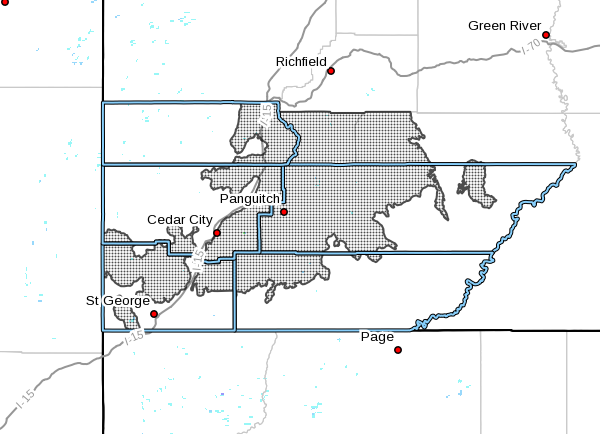
ST. GEORGE — The National Weather Service issued an urgent weather message at 8:07 a.m. Monday for dense fog in parts of six Southern Utah counties. The Dense Fog Advisory is in effect until 11 a.m. Monday.

Affected area
Southern mountains, including the cities of Loa, Panguitch and the Bryce Canyon area to at least the junction of State Road 12 and Highway 89.
Visibility
Dropping to one quarter mile or less.
Timing
Through 11 a.m. Monday
impacts
Reduced visibility in dense fog will make travel difficult and dangerous at times.
Precautionary and preparedness actions
A Dense Fog Advisory means visibility will frequently be reduced to one quarter mile or less. If driving, slow down, use your headlights and leave plenty of distance ahead of you.
Vehicle preparation and safety precautions for winter weather
Stay in your vehicle
- Disorientation occurs quickly in wind-driven snow and cold.
- Run the motor about 10 minutes each hour for heat.
- Open the window a little for fresh air to avoid carbon monoxide poisoning.
- Make sure the exhaust pipe is not blocked.
- Make yourself visible to rescuers.
- Turn on the dome light at night when running engine.
- Tie a colored cloth (preferably red) to your antenna or door.
- Raise the hood indicating trouble after snow stops falling.
- Exercise from time to time, by vigorously moving arms, legs, fingers and toes to keep blood circulating and to keep warm.
- Wear a hat; half your body heat loss can be from the head.
- Cover your mouth to protect your lungs from extreme cold.
- Mittens, snug at the wrist, are better than gloves.
- Loose-fitting, lightweight, warm clothing in several layers is best. Trapped air insulates, and layers can be removed to avoid perspiration and subsequent chills.
- Outer garments should be tightly woven, water repellent and hooded.
- Safely removing tires and upholstery from your vehicle and lighting them on fire in a cleared area will create smoke to facilitate your being located.
Supplies recommended to keep in your vehicle in case of emergencies
- Cellphone, portable charger and extra batteries.
- Windshield scraper.
- Battery-powered radio, extra batteries.
- Flashlights, extra batteries.
- Snack food.
- Extra hats, coats, mittens, change of clothes.
- Blankets.
- Chains or rope.
- Tire chains.
- Spare gas.
- Canned compressed air with sealant (emergency tire repair).
- Road salt and sand.
- Booster / jumper cables.
- Emergency flares.
- Bright colored flag; help signs.
- Lighter / matches (waterproof matches and a can to melt snow for water).
- First aid kit – (Basic first aid courses are recommended).
- Spare water.
- Hi-lift jack.
- Spare tire with keys for locking lug nuts.
- Spare keys.
- Shovel.
- Tow strap.
- Tool kit.
- Duct tape.
- Trash bags.
- Road maps.
- Compass.
- Towels, paper towels.
The above recommendations were compiled in 2015 from the Washington County Sheriff’s Search and Rescue website, the Center for Disease Control’s emergency winter weather checklist, the U.S. Search and Rescue Task Force’s website on blizzard preparedness. This is a list of suggestions, in no particular order of priority, and should not be presumed exhaustive.
Printable / savable pdf: Vehicle Preparation and Safety Precautions for Winter Weather.
Email: [email protected]
Twitter: @STGnews
Copyright St. George News, SaintGeorgeUtah.com LLC, 2017, all rights reserved.